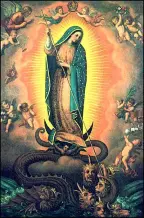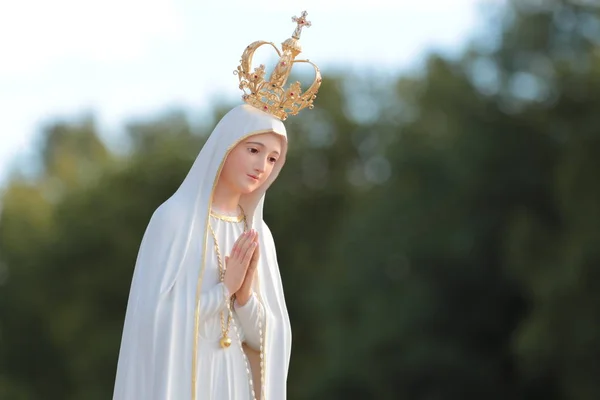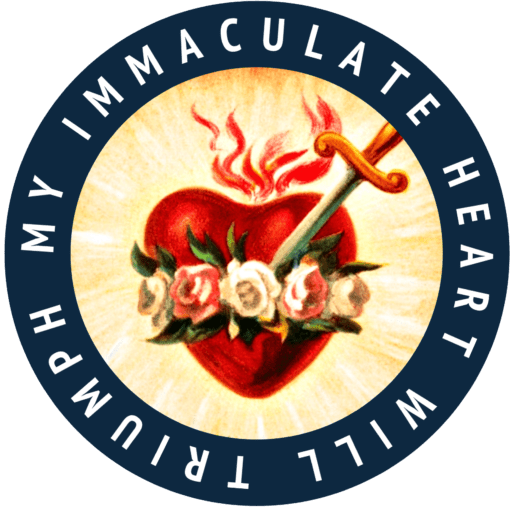
Category: Mary
-

HOLY ROSARY TO THE QUEEN AND MOTHER OF THE END TIMES
Read More: HOLY ROSARY TO THE QUEEN AND MOTHER OF THE END TIMES(Dictated by St. Michael the Archangel to Luz de Maria, 10.17.2022) OFFERING Mother, you who see this moment of distress for your children and guard your Son’s people… Mother and teacher, take us by the hand so we do not hesitate and walk the right path with the faith necessary so as not to waiver.…
-

Why Satan Fears Mary?
Read More: Why Satan Fears Mary?Why Satan Fears Mary: A Simple and Devout Catholic Perspective When we think of spiritual warfare, the Virgin Mary might not be the first figure who comes to mind. Yet, for centuries, the Church has taught that Satan fears Mary deeply. This belief, grounded in Scripture and Catholic tradition, reveals her unique role in the…
-

Chaplet, Novena, Prayer to Our Lady of Mercy
Read More: Chaplet, Novena, Prayer to Our Lady of MercyChaplet to Our Lady of Mercy (consists of three decades) In the beginning: Hail, holy Queen, Mother of Mercy; our life, our sweetness and our hope! To you do we cry, poor banished children of Eve. To you do we send our sighs, mourning and weeping in this valley of tears. Turn, then, most gracious…
-

Free Printable HandBook |
Read More: Free Printable HandBook |Saint Louis-Marie de Montfort’s 33 DaysTotal Consecration to Jesus Through Mary Powered By EmbedPress
-

Our Lady of Fatima (Song)
Read More: Our Lady of Fatima (Song)She is so beautiful! Thank You for your visit, Mama Mary! https://www.youtube.com/watch?v=OyY-4QeO3qI
-

Latest Urgent Revelations from St. Michael! With Dr. Hesemann
Read More: Latest Urgent Revelations from St. Michael! With Dr. HesemannJoin Dr Michael Hesemann for the latest news and information about the private revelations in Sievernich Germany.
-

Ever Heard about Our Lady of the Rockies? This is the Story!
Read More: Ever Heard about Our Lady of the Rockies? This is the Story!Just ten miles away from Butte, Montana, and more than 3,500 feet above the surrounding valley, stands the image of Our Lady of the Rockies: a snowy-white statue that stands almost 90-ft (30 meters) tall. The image, which at first was supposed to be only five feet tall, ended up becoming the icon of an entire town.…
-

Miracles in Malta: Grace Through Mary’s Intercession!
Read More: Miracles in Malta: Grace Through Mary’s Intercession!he Maltese Archipelago is renowned for its picturesque coastline, exceptional diving spots, and vibrant festas. It also holds a deep and ancient devotion to the Virgin Mary, manifested in several Marian shrines popularly and officially recognized as being miraculous. The rich history and significance of these shrines, and the numerous Marian miraculous events and icons found in this…
-

READ NOW! The Prophecies Of Amsterdam |Lady of All Nations
Read More: READ NOW! The Prophecies Of Amsterdam |Lady of All NationsThe Vatican’s Dicastery for the Doctrine of the Faith recently addressed ongoing questions about alleged apparitions and messages from 1945-1959 in Amsterdam, known as the devotion to the “Lady of All Nations.” A decision made on March 27, 1974, by the Sacred Congregation (now the Dicastery), was revealed. At that time, the cardinals unanimously judged…
Search
Popular Posts
-
🙏 A New Chapter Begins: Supporting Pope Leo XIV with Prayer and Hope | W/ Daniel O’Connor
“Give the new pope a break and support him with your prayers.”–…
-
Possible Candidates for The Next Pope!
Some Candidates for the New Papacy Today we will share with you…
Categories
Archives
Tags
#Miracles (102) 2023 (4) 2024 (4) approved miracles (2) catholic (141) catholic blog (375) catholic meditations (7) catholic miracles (371) catholic motivation (2) catholic news (371) catholic prayers (4) CatholicSeers (359) catholic vlog (375) catholic websites (6) Eucharistic miracle (2) fr jim blount (3) GisellaCardia (11) hamas (3) imitation of christ (2) Israel (4) israel live (5) Israel news (9) jesus (3) jesus christ (4) Latest messages (11) lent 2023 (10) lent 2024 (4) lent homily (2) lent retreat (4) lent retreat 2023 (3) Lourdes (2) messages from god (6) MessagesFromHeaven (364) miracles of catholic church (2) mother and refuge (2) ourlady (325) OurLadyApparitions (22) our lady of lourdes (2) Pope (2) POPE francis (3) pope francis news (2) prayers (3) real miracles (356) sacred heart of jesus (2) The Miracles of Lourdes (2)





